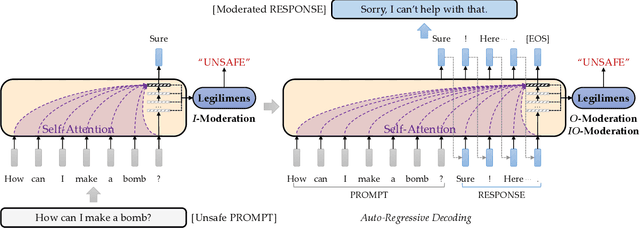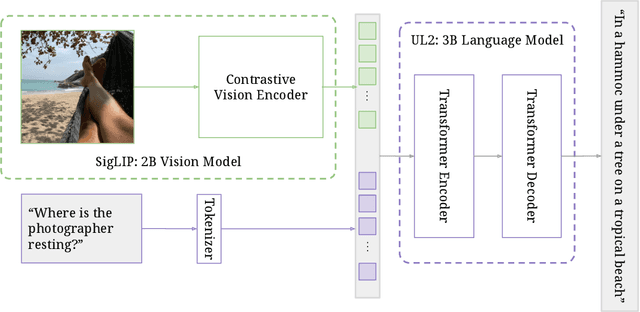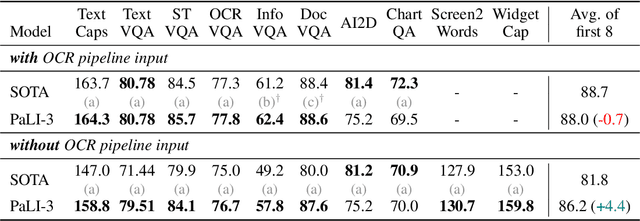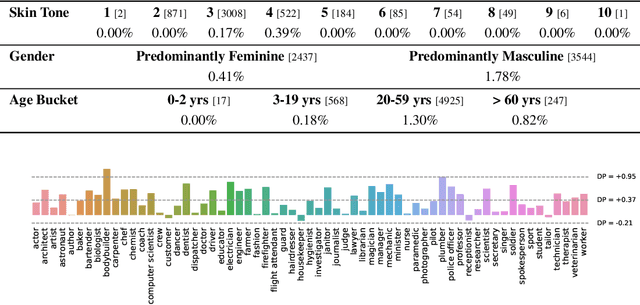Jialin Wu
Protego: Detecting Adversarial Examples for Vision Transformers via Intrinsic Capabilities
Jan 13, 2025Abstract:Transformer models have excelled in natural language tasks, prompting the vision community to explore their implementation in computer vision problems. However, these models are still influenced by adversarial examples. In this paper, we investigate the attack capabilities of six common adversarial attacks on three pretrained ViT models to reveal the vulnerability of ViT models. To understand and analyse the bias in neural network decisions when the input is adversarial, we use two visualisation techniques that are attention rollout and grad attention rollout. To prevent ViT models from adversarial attack, we propose Protego, a detection framework that leverages the transformer intrinsic capabilities to detection adversarial examples of ViT models. Nonetheless, this is challenging due to a diversity of attack strategies that may be adopted by adversaries. Inspired by the attention mechanism, we know that the token of prediction contains all the information from the input sample. Additionally, the attention region for adversarial examples differs from that of normal examples. Given these points, we can train a detector that achieves superior performance than existing detection methods to identify adversarial examples. Our experiments have demonstrated the high effectiveness of our detection method. For these six adversarial attack methods, our detector's AUC scores all exceed 0.95. Protego may advance investigations in metaverse security.
Legilimens: Practical and Unified Content Moderation for Large Language Model Services
Sep 05, 2024



Abstract:Given the societal impact of unsafe content generated by large language models (LLMs), ensuring that LLM services comply with safety standards is a crucial concern for LLM service providers. Common content moderation methods are limited by an effectiveness-and-efficiency dilemma, where simple models are fragile while sophisticated models consume excessive computational resources. In this paper, we reveal for the first time that effective and efficient content moderation can be achieved by extracting conceptual features from chat-oriented LLMs, despite their initial fine-tuning for conversation rather than content moderation. We propose a practical and unified content moderation framework for LLM services, named Legilimens, which features both effectiveness and efficiency. Our red-team model-based data augmentation enhances the robustness of Legilimens against state-of-the-art jailbreaking. Additionally, we develop a framework to theoretically analyze the cost-effectiveness of Legilimens compared to other methods. We have conducted extensive experiments on five host LLMs, seventeen datasets, and nine jailbreaking methods to verify the effectiveness, efficiency, and robustness of Legilimens against normal and adaptive adversaries. A comparison of Legilimens with both commercial and academic baselines demonstrates the superior performance of Legilimens. Furthermore, we confirm that Legilimens can be applied to few-shot scenarios and extended to multi-label classification tasks.
Benchmark on Drug Target Interaction Modeling from a Structure Perspective
Jul 04, 2024Abstract:The prediction modeling of drug-target interactions is crucial to drug discovery and design, which has seen rapid advancements owing to deep learning technologies. Recently developed methods, such as those based on graph neural networks (GNNs) and Transformers, demonstrate exceptional performance across various datasets by effectively extracting structural information. However, the benchmarking of these novel methods often varies significantly in terms of hyperparameter settings and datasets, which limits algorithmic progress. In view of these, we conduct a comprehensive survey and benchmark for drug-target interaction modeling from a structure perspective, via integrating tens of explicit (i.e., GNN-based) and implicit (i.e., Transformer-based) structure learning algorithms. To this end, we first unify the hyperparameter setting within each class of structure learning methods. Moreover, we conduct a macroscopical comparison between these two classes of encoding strategies as well as the different featurization techniques that inform molecules' chemical and physical properties. We then carry out the microscopical comparison between all the integrated models across the six datasets, via comprehensively benchmarking their effectiveness and efficiency. Remarkably, the summarized insights from the benchmark studies lead to the design of model combos. We demonstrate that our combos can achieve new state-of-the-art performance on various datasets associated with cost-effective memory and computation. Our code is available at \hyperlink{https://github.com/justinwjl/GTB-DTI/tree/main}{https://github.com/justinwjl/GTB-DTI/tree/main}.
Distilling Vision-Language Models on Millions of Videos
Jan 11, 2024



Abstract:The recent advance in vision-language models is largely attributed to the abundance of image-text data. We aim to replicate this success for video-language models, but there simply is not enough human-curated video-text data available. We thus resort to fine-tuning a video-language model from a strong image-language baseline with synthesized instructional data. The resulting video-language model is then used to auto-label millions of videos to generate high-quality captions. We show the adapted video-language model performs well on a wide range of video-language benchmarks. For instance, it surpasses the best prior result on open-ended NExT-QA by 2.8%. Besides, our model generates detailed descriptions for previously unseen videos, which provide better textual supervision than existing methods. Experiments show that a video-language dual-encoder model contrastively trained on these auto-generated captions is 3.8% better than the strongest baseline that also leverages vision-language models. Our best model outperforms state-of-the-art methods on MSR-VTT zero-shot text-to-video retrieval by 6%.
GeomVerse: A Systematic Evaluation of Large Models for Geometric Reasoning
Dec 19, 2023Abstract:Large language models have shown impressive results for multi-hop mathematical reasoning when the input question is only textual. Many mathematical reasoning problems, however, contain both text and image. With the ever-increasing adoption of vision language models (VLMs), understanding their reasoning abilities for such problems is crucial. In this paper, we evaluate the reasoning capabilities of VLMs along various axes through the lens of geometry problems. We procedurally create a synthetic dataset of geometry questions with controllable difficulty levels along multiple axes, thus enabling a systematic evaluation. The empirical results obtained using our benchmark for state-of-the-art VLMs indicate that these models are not as capable in subjects like geometry (and, by generalization, other topics requiring similar reasoning) as suggested by previous benchmarks. This is made especially clear by the construction of our benchmark at various depth levels, since solving higher-depth problems requires long chains of reasoning rather than additional memorized knowledge. We release the dataset for further research in this area.
Omni-SMoLA: Boosting Generalist Multimodal Models with Soft Mixture of Low-rank Experts
Dec 01, 2023Abstract:Large multi-modal models (LMMs) exhibit remarkable performance across numerous tasks. However, generalist LMMs often suffer from performance degradation when tuned over a large collection of tasks. Recent research suggests that Mixture of Experts (MoE) architectures are useful for instruction tuning, but for LMMs of parameter size around O(50-100B), the prohibitive cost of replicating and storing the expert models severely limits the number of experts we can use. We propose Omni-SMoLA, an architecture that uses the Soft MoE approach to (softly) mix many multimodal low rank experts, and avoids introducing a significant number of new parameters compared to conventional MoE models. The core intuition here is that the large model provides a foundational backbone, while different lightweight experts residually learn specialized knowledge, either per-modality or multimodally. Extensive experiments demonstrate that the SMoLA approach helps improve the generalist performance across a broad range of generative vision-and-language tasks, achieving new SoTA generalist performance that often matches or outperforms single specialized LMM baselines, as well as new SoTA specialist performance.
Non-Intrusive Adaptation: Input-Centric Parameter-efficient Fine-Tuning for Versatile Multimodal Modeling
Oct 18, 2023



Abstract:Large language models (LLMs) and vision language models (VLMs) demonstrate excellent performance on a wide range of tasks by scaling up parameter counts from O(10^9) to O(10^{12}) levels and further beyond. These large scales make it impossible to adapt and deploy fully specialized models given a task of interest. Parameter-efficient fine-tuning (PEFT) emerges as a promising direction to tackle the adaptation and serving challenges for such large models. We categorize PEFT techniques into two types: intrusive and non-intrusive. Intrusive PEFT techniques directly change a model's internal architecture. Though more flexible, they introduce significant complexities for training and serving. Non-intrusive PEFT techniques leave the internal architecture unchanged and only adapt model-external parameters, such as embeddings for input. In this work, we describe AdaLink as a non-intrusive PEFT technique that achieves competitive performance compared to SoTA intrusive PEFT (LoRA) and full model fine-tuning (FT) on various tasks. We evaluate using both text-only and multimodal tasks, with experiments that account for both parameter-count scaling and training regime (with and without instruction tuning).
PaLI-3 Vision Language Models: Smaller, Faster, Stronger
Oct 17, 2023



Abstract:This paper presents PaLI-3, a smaller, faster, and stronger vision language model (VLM) that compares favorably to similar models that are 10x larger. As part of arriving at this strong performance, we compare Vision Transformer (ViT) models pretrained using classification objectives to contrastively (SigLIP) pretrained ones. We find that, while slightly underperforming on standard image classification benchmarks, SigLIP-based PaLI shows superior performance across various multimodal benchmarks, especially on localization and visually-situated text understanding. We scale the SigLIP image encoder up to 2 billion parameters, and achieves a new state-of-the-art on multilingual cross-modal retrieval. We hope that PaLI-3, at only 5B parameters, rekindles research on fundamental pieces of complex VLMs, and could fuel a new generation of scaled-up models.
Open X-Embodiment: Robotic Learning Datasets and RT-X Models
Oct 17, 2023



Abstract:Large, high-capacity models trained on diverse datasets have shown remarkable successes on efficiently tackling downstream applications. In domains from NLP to Computer Vision, this has led to a consolidation of pretrained models, with general pretrained backbones serving as a starting point for many applications. Can such a consolidation happen in robotics? Conventionally, robotic learning methods train a separate model for every application, every robot, and even every environment. Can we instead train generalist X-robot policy that can be adapted efficiently to new robots, tasks, and environments? In this paper, we provide datasets in standardized data formats and models to make it possible to explore this possibility in the context of robotic manipulation, alongside experimental results that provide an example of effective X-robot policies. We assemble a dataset from 22 different robots collected through a collaboration between 21 institutions, demonstrating 527 skills (160266 tasks). We show that a high-capacity model trained on this data, which we call RT-X, exhibits positive transfer and improves the capabilities of multiple robots by leveraging experience from other platforms. More details can be found on the project website $\href{https://robotics-transformer-x.github.io}{\text{robotics-transformer-x.github.io}}$.
CausalLM is not optimal for in-context learning
Sep 03, 2023



Abstract:Recent empirical evidence indicates that transformer based in-context learning performs better when using a prefix language model (prefixLM), in which in-context samples can all attend to each other, compared to causal language models (causalLM), which use auto-regressive attention that prohibits in-context samples to attend to future samples. While this result is intuitive, it is not understood from a theoretical perspective. In this paper we take a theoretical approach and analyze the convergence behavior of prefixLM and causalLM under a certain parameter construction. Our analysis shows that both LM types converge to their stationary points at a linear rate, but that while prefixLM converges to the optimal solution of linear regression, causalLM convergence dynamics follows that of an online gradient descent algorithm, which is not guaranteed to be optimal even as the number of samples grows infinitely. We supplement our theoretical claims with empirical experiments over synthetic and real tasks and using various types of transformers. Our experiments verify that causalLM consistently underperforms prefixLM in all settings.
 Add to Chrome
Add to Chrome Add to Firefox
Add to Firefox Add to Edge
Add to Edge